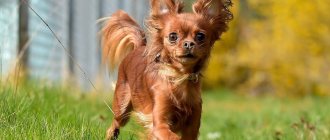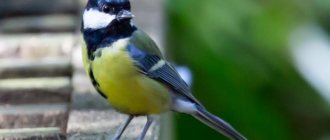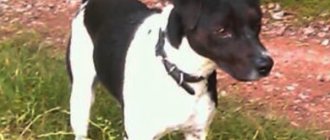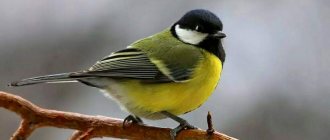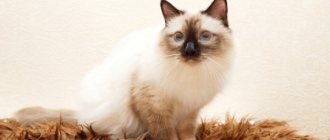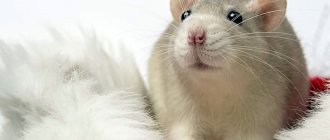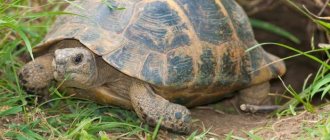Chinchillas are popular pets from the rodent family with an attractive appearance and funny character. They are easy to care for, clean and do not require constant attention. But there are still some rules for keeping pet chinchillas that a novice owner should familiarize himself with in advance.
In the article we will tell you how to keep a chinchilla at home, what conditions need to be created, what is the life expectancy of the rodent, character traits and behavior, choice of cage and its arrangement, diet, how to tame and walk your pet, is it possible to bathe, breeding, what diseases do you have? chinchillas, advantages and disadvantages of keeping them.
Features of chinchillas
Chinchillas are medium-sized rodents with beautiful thick fur and a bushy tail. The coat color is gray with a white belly. There are also representatives of black, snow-white, white-pink and beige colors.
The maximum weight of an adult chinchilla is 800-900 g, and the height of the animal can reach 30-38 cm. The length of the tail is 12-17 cm.
Chinchillas have large, slightly rounded ears, by which you can always determine your pet’s mood. If he is scared, the ears lie on his back, in the same position they are when the animal sleeps. And if the chinchilla listens and shows interest, its ears rise high.
These exotic rodents have very beautiful shiny black eyes in which you can see your reflection. Chinchillas also have strong and massive hind legs, which allow them to easily push off the ground when running. They are longer than the front legs.
Character, behavior and habits of a rodent
Chinchillas are smart animals that adapt well to home conditions. They are very inquisitive, show interest in the world around them and do not ignore any changes in the cage or room. If guests appear in the house, they react very violently, trying to attract attention to their person. They also make interesting sounds, by which you can understand how the animal feels. For example, if a chinchilla is unhappy with something, it makes a cracking sound.
Other behavioral features, habits and character of the chinchilla:
- very energetic, can jump vigorously in the cage, demanding release;
- are nocturnal, sleeping most of the day;
- quickly become attached to the owner, but do not like affection, prefer to be watched from the side;
- They tolerate loneliness well.
A distinctive feature of chinchillas is also their cleanliness. They always keep their fur clean and never stink. The owner needs to support this habit of the animal and regularly clean the cage.
Chinchilla breeds: Shades and breeds of animals with photographs and names
Many believe that chinchilla breeds are fiction, and that the animals can be exclusively gray, the way they are most often seen in pet store windows and in photos on the Internet. However, this opinion is wrong. Breeders have been working for decades to ensure that the breeds and shades of these funny rodents only increase.
Below we will introduce you to the varieties of chinchilla colors and their breeds offered in nurseries.
Rules for keeping chinchillas at home
Caring for chinchillas at home does not pose any particular difficulties, but it requires proper equipment of the cage where the exotic rodent will live and compliance with the temperature regime.
What kind of cage is needed and how to arrange it
The ideal home for a pet chinchilla would be a spacious cage measuring 60x50x100 cm. The fluffy rodent loves to jump around the cage, so the higher it is, the more comfortable the pet will feel.
After purchasing a suitable cage for a chinchilla, we move on to its proper arrangement.
Required equipment:
- Feeder and drinker for food and water. It is advisable to purchase metal dishes so that your pet does not chew them. It is also necessary to securely fix the feeder, as rodents love to carry them in their teeth.
- Chalk stone for grinding teeth (sold in pet stores).
- Toys – wooden cubes, walnut shells.
- Active rodents will love a running wheel, but a regular one will not work as it has too large distances between the bars. An alternative option would be a metal wheel. In place of the rods there is a mesh. During running activities, a chinchilla can injure its paw. For such rodents, special solid wooden wheels are provided, which are safe for active jogging.
- You can also place large, non-sharp stones, tree branches, and ladders in the cage. In hot weather, the chinchilla will be able to cool off on the branches. This will help her avoid overheating, which is detrimental to her. It is very important to choose durable accessories and securely fasten them in the animal’s home so that during active movement they do not fall and injure the chinchilla.
- For entertainment complexes, wooden bridges, tunnels and even hammocks made of thick fabric are installed in the cages.
- Chinchillas love to take sand baths. At least once every 2-3 days, a bathing suit with clean volcanic sand, selected according to the size of the animal, is installed in the cage. Sand must be purchased at a pet store. You can leave the bathing suit inside the house for about 30 minutes, and then it’s better to remove it, since chinchillas can urinate on the sand. In this case, an unpleasant odor appears in the cage. Prolonged contact with sand is contraindicated; it dries out your pet's skin.
In pet supply stores you can buy everything you need to equip a cage with a pet chinchilla. The assortment includes a wide variety of toys for the inquisitive rodent. Products made from natural wood are considered the safest. Over time, the chinchilla can chew them off, but such toys bring a lot of joyful emotions to the animal and allow them to have fun without the attention of the owner.
Comfortable temperature for a chinchilla
A prerequisite for keeping a pet chinchilla is the creation of a favorable microclimate with maintenance of optimal air temperature. These animals feel comfortable at a temperature of +12+230C. Direct sunlight should not enter the cage, as it is harmful to the rodent. The optimal humidity level is no more than 60%.
When the air temperature is higher than the maximum recommended value, chinchillas feel unwell and become inactive. They experience similar discomfort at low temperatures. You can control the temperature in your pet chinchilla’s home using a regular room thermometer and a hygrometer, which determines the level of humidity in the room.
How location of purchase affects cost
Market
The cost of animals on the poultry market is much lower. When choosing this method of acquisition, you should take into account the presence of a large number of risks, since this source is not reliable.
The main market assortment is culled individuals (sick, small and having other defects). Too low a price (up to 2,000 rubles) should alert the buyer - the animal will probably not live longer than a couple of months.
In markets in regions where there are no breeders, the cost of chinchillas is higher. But this is not a guarantee of quality, but only a consequence of the lack of competition.
Caring for a chinchilla at home
Chinchillas living at home need the owner's care and proper care.
Main responsibilities of the owner:
- organizing proper and timely nutrition for the rodent;
- hygienic care of animals;
- cleaning the cage.
What and how many times a day to feed
Proper nutrition is the key to the health and long life of a rodent at home. 70-80% of a domestic chinchilla’s diet consists of ready-made food made from pressed grass pellets. This product is purchased at pet stores. When choosing food, study its composition. It should not contain additional additives, preservatives, yeast or salt.
The recommended daily portion of ready-made food for chinchillas is 2 tbsp. l. Uneaten remains are removed from the feeder, and the next time fresh food is given.
Additional bait to the chinchilla's main diet:
- Cereals. Every day you can feed your chinchilla a cereal mixture of corn, rolled oats, buckwheat, lentils and flax seeds. The dosage of each ingredient is 1 tsp, and flax seeds - no more than 1/3 tsp.
- The hay is clean, purchased, without any pungent odor, roots or soil. This product is given once every 3-4 days in small portions.
- Treats (no more than 10% of the diet). You can pamper your pet with ready-made bait from stores, as well as dried berries, fruits and branches of healthy trees.
Chinchillas can be given twigs and leaves of viburnum, acacia, maple, cranberry, hawthorn, rowan, gooseberry, sea buckthorn, Jerusalem artichoke root, calendula and jasmine flowers, leaves of lemon balm, mallow, oregano, alfalfa and nettle.
Allowed products also include grape leaves, stems of chamomile, clover, mint, thyme, string, coltsfoot, apple inflorescences and fruits, willow buds, pumpkin seeds, parsley, sweet peppers, carrots, strawberries, raspberries, blackberries, honeysuckle and lingonberries.
Allowed treats are given in small portions. It is advisable to treat your pet with a variety of baits so that his body receives all the necessary microelements.
Important rules:
- herbs and twigs for feeding chinchillas are collected in ecologically clean areas far from highways;
- be careful when choosing foods to feed your chinchilla and never give the animal spoiled or dirty food;
- A chinchilla should not be overfed with sweets, since the liver of this rodent is not designed to process large amounts of glucose.
Remember: a harmful and unbalanced diet provokes various diseases and leads to the premature death of a pet.
Bathing and grooming chinchillas
Chinchillas are clean animals that take care of their luxurious fur on their own. The owner can only take a small part in caring for the pet, providing her with the opportunity to take pleasant and healthy sand baths by placing a container with sand in the cage.
It is not recommended to bathe your chinchilla in water. Water procedures can result in inflammatory diseases. These rodents are very vulnerable to hypothermia and catch cold quickly. If the fur is heavily soiled, you can moisten a soft cloth with water and gently wipe your pet’s fluffy coat.
Chinchillas do not need nail trimming or ear care. They cope with these hygiene procedures on their own. The owner only needs to monitor the oral health of the furry pet. A stone for sharpening teeth, as well as branches of useful plants, should be constantly available in the cage.
Cleaning the cage
Once every 3-4 days you need to clean the chinchilla’s cage. It is recommended to fill the bottom of the structure with special fillers. They absorb moisture and unpleasant odors well and are absolutely safe for rodents.
How to clean:
- The bottom of the cage is cleared of debris and other contaminants. For convenience, it is recommended to use a small brush and dustpan.
- The surfaces of the structure and accessories are cleaned of dust with a damp cloth.
- Once a month it is recommended to disinfect the cage and internal elements. This procedure is carried out in order to destroy pathogenic microorganisms, which will eliminate the risk of illness for the pet.
- Every day you need to change the water in the drinking bowl and keep the feeder clean.
Cleaning the cage will not take much time and will provide safe living conditions for your furry rodent at home.
Chinchillas with dark fur
These rodents include black velvet chinchillas with rich black fur and a white belly.
Black velvet
This color combines black and white. The animals have a black body and tail, and a white belly. This contrast looks very impressive and the clearer the color boundaries, the higher the price of a chinchilla and the more valued the breed is.
This species of rodent was bred in the 60s of the last century. Breeders believe that the dark skin is evidence of the high quality of the breed. Chinchillas may have light stripes on their limbs, a charcoal mask, and dark fur on their heads.
The older a rodent gets, the more pronounced its breed characteristics become. Since the black fur gene is lethal, crossing with representatives of your own breed is unacceptable; black chinchillas can only be mated with rodents of other colors.
Taming and walking
Chinchillas are self-sufficient animals by nature, preferring solitude. They cannot be raised and tamed like dogs or cats, although there are exceptions. Some furry representatives show affection and happily sit in the arms of the owner.
How to tame a pet chinchilla:
- During the first days of a week of living in a new home, the rodent needs to adapt. During this period it is better to leave him alone.
- Starting from the 3rd week, you can begin taming: talk to your pet, try to open the cage and extend your hand to the chinchilla. This may interest her, she will begin to sniff the palm and quietly bite the fingers. Chinchilla bites are absolutely safe and painless.
- When the chinchilla gets used to the owner's hand, it can jump onto the palm. The owner does not need to make sudden movements and try to pull the pet out of the cage. At first, such communication procedures are enough.
- For any success in training, you can reward your chinchilla with a tasty treat.
- When the rodent gets used to the person, you can try to lure him out of the cage and put him in your arms. Prepare a treat for your furry friend in advance. Gently stroke the fur on the neck, ears and chest, encouraging the animal with kind words. Try not to stroke your chinchilla's back or sides; he won't like it.
- Communicate with the chinchilla, calling it by name, let it get used to its nickname.
- Do not pick up your chinchilla against its will. She may get scared and bite or scratch in self-defense. Another fighting technique of this rodent is shooting urine at the enemy.
If a chinchilla finds contact with its owner unpleasant, it will make a dissatisfied noise. At such moments, it is better to leave the rodent alone and postpone all attempts to tame the pet to another time. Let her calm down and get used to attention from people.
Chinchillas with light colored fur
Chinchillas with a white coat simply look luxurious and elegant. They have a number of unusual shades.
White Wilson
Chinchillas have white fur mixed with white or beige. You can purchase such an animal at a nursery or from breeders at home. The color is in demand among connoisseurs of these rodents.
Albino
These chinchillas do not have color pigments at the genetic level, so they have a snow-white tint and a red iris.
White lova
Chinchillas have white fur with a slight cream tint and dark ruby eyes.
Possible diseases
For a number of reasons, your pet chinchilla can get sick. In such cases, the pet will require immediate medical attention. An experienced specialist will conduct a diagnosis and select a treatment course based on special medications intended for rodents.
What diseases can a chinchilla develop:
- Hyperthermia is overheating of the body. This condition occurs if the recommended temperature regime is not observed. The deterioration of the pet’s condition begins already at an ambient temperature of +250C. If the air warms up to 300C, the chinchilla may die suddenly. The main symptoms of hyperthermia: immobility, redness of the tongue, stretching of the body while lying on its side, convulsions. First aid: the cage with the chinchilla needs to be moved to a cool place. To relieve her condition, it is recommended to moisten the outside of her ears and paw pads with cool water. To prevent dehydration, give your chinchilla water to drink.
- Abnormal stools and liquid feces are a fairly common problem in domestic chinchillas that arise as a result of poor quality nutrition or after a change in food. The owner needs to disinfect the cage and review the chinchilla’s diet. To combat loose stools, special medications are used that can be purchased at a veterinary pharmacy.
- Colds - occur due to hypothermia of the animal. For example, if the cage is in a draft or the chinchilla has been in low temperatures for a long time. Main symptoms: runny nose, cough, sneezing, watery eyes, lethargy. Chinchilla colds can be treated with medications prescribed by a veterinarian.
- Ringworm is manifested by hair loss in a certain area of the body. It develops as a result of stress or fear, as well as due to low immunity, unsanitary living conditions, or after contact with an infected pet. It is treated with special ointments as prescribed by a doctor.
In addition to the listed pathologies, the domestic chinchilla can develop diseases of the eyes, ears, digestive organs, reproductive system, and even have a stroke. Proper care and quality nutrition will reduce the risk of developing diseases.
Animals with beige fur
The main shade of these rodents is pastel. However, it has several variations. Additionally, the older the chinchilla, the darker its fur will be. It can be brown, red or beige. This type of rodent can be crossed.
Homobeige
This species of rodent has light beige fur with uniform coloring and pink ears. For this shade, single dark hairs are acceptable.
Heterobeige
In these rodents, on the contrary, the color is uneven. The entire coat is beige, and the undercoat and ends of the hairs are brown. When choosing a chinchilla, you should pay attention to the color distinction between the rest of the body and the belly.
Beige tower
The color of the fur of these animals varies from light to dark beige, which is combined with a brown pattern located along the spine.
Wellman beige
The chinchilla has light beige fur, light ears and dark eyes.
Beige Sullivan
Rodents have rich beige fur and red eyes.
Brown velvet
The basic fur color of these animals is beige, while the back and head have a chocolate tint, and the belly is sandy.
Chinchilla as a pet: pros and cons
Keeping chinchillas at home has its pros and cons. Let's look at them.
Pros:
- An independent and clean rodent that does not require constant attention, it is an excellent choice for busy people who do not have the opportunity to devote a lot of time to their pet.
- A chinchilla does not produce an unpleasant odor, even if the animal’s cage has not been cleaned for several days. This is due to the absence of sweat and sebaceous glands in the rodent’s body.
- Chinchilla fur does not harbor fleas and ticks.
- Chinchilla fur is hypoallergenic.
- These animals carry out hygienic care on their own, which reduces the list of responsibilities for the owner.
- They have strong immunity and do not suffer from genetic diseases.
- They eat little, so you don’t have to spend a lot of money on food and necessary accessories for your chinchilla.
Minuses:
- are nocturnal;
- afraid of loud sounds;
- can't stand heat;
- walks around the house can only be done under supervision, as a chinchilla can chew furniture and other interior items;
- To keep a rodent, you need a spacious cage with good equipment so that the self-sufficient and active animal always has something to do.
Chinchillas are cute, fluffy animals with interesting behavior patterns that bring their owners a lot of positive emotions.
Where and how long do chinchillas live?
Chinchillas live for about 20 years. The homeland of these animals is South America. Under natural conditions, the chinchilla lives in the Andes of Southern Bolivia, northwestern Argentina and northern Chile. Chinchillas live in the mountains at an altitude of up to 5 km above sea level. In its natural environment, the chinchilla animal lives in rock crevices, under stones, or digs holes.
The chinchilla animal is perfectly adapted to life in the mountains. The structure of the skeleton allows the animal to crawl through even the narrowest spaces, and the developed cerebellum ensures confident movement along rocks. Chinchillas live in colonies and are active at night. In nature, chinchillas feed on various herbaceous plants (cereals, beans, mosses, lichens, shrubs, cacti, tree bark) and insects.
The chinchilla animal is mostly monogamous. Chinchillas become capable of reproduction at the age of 7-8 months. The duration of pregnancy is a little more than 3 months. Usually 2-3 babies are born. The female is capable of bearing offspring up to three times a year. Chinchilla cubs are born with open eyes, erupted teeth and covered with primary hair.
It's no secret that the chinchilla animal is a source of valuable fur. Chinchillas began to be hunted for their beautiful fur in the 19th century. To make one fur coat, it takes about a hundred skins, so chinchilla fur products are rare and expensive. In 1928, a coat made from the fur of these rodents cost half a million gold marks. In 1992, the price of a chinchilla fur coat was $22,000. Currently, the chinchilla animal is protected in South America. Now in many countries there are special farms where chinchillas are bred for their fur.
Standard gray color of chinchillas
The gray coat is characteristic of both wild and domestic chinchillas. But depending on the shade and depth of color, the gray standard is divided into moderately dark, light, medium, dark and very dark.
Light
Rodents of this color are characterized by light gray fur with a silvery sheen. The belly, chest and paws are pale, almost white.
Average
This is the most typical and common fur color of these animals. The animals have a coat of a uniform gray shade, but a lighter color on the stomach, legs and chest.
Dark
These animals have a gray-black coat with a blue tint that is lighter in color around the belly and chest.
Moderately dark
Chinchillas have a dark gray coat with ash shades on their paws, face and sides. The coat on the belly is blue and white.
Extra dark
The animal's fur is gray, fading to a lighter shade on the sides and chest. The belly is light beige.
Population and species status
Today we can safely say that these animals are facing complete extinction. This mainly concerns chinchilla populations in the wild. According to experts, over the past 15 years the total number of these animals has decreased by almost 90 percent. In 2022, scientists knew of only 42 colonies of animals living within the South American continent. Scientists also believe that there are so few animals left that there is no need to talk about an increase in the population.
Interesting moment! A chinchilla fur coat is valued at $20,000, so it’s not surprising that these animals are so mercilessly destroyed. To sew one fur coat, you will have to destroy at least a hundred adult individuals.
They began sewing such fur coats in Europe in the 19th century. From 1828 to 1916, about 7 million skins were exported from Chile, and in total up to 21 million animals were destroyed and exported. The figure is such that the hair on the head rises spontaneously. Only in 1898 were laws passed prohibiting hunting and export. Unfortunately, it was very late and such bans are no longer able to influence the decrease in the total number.




